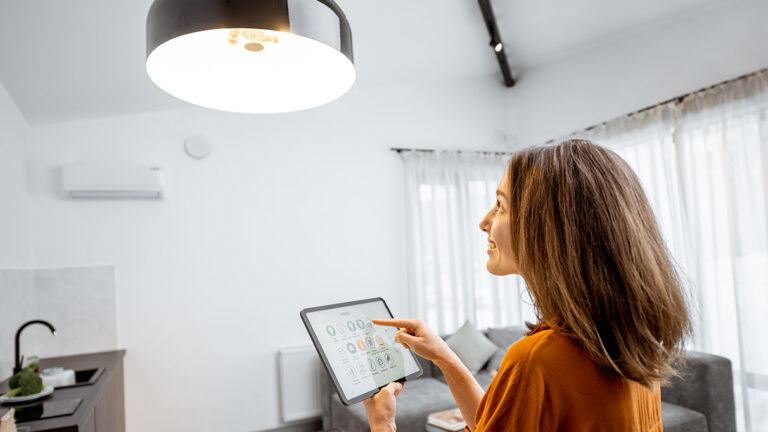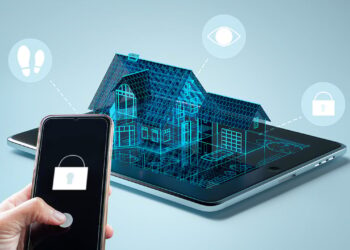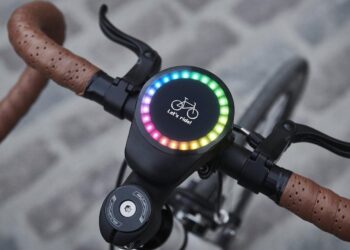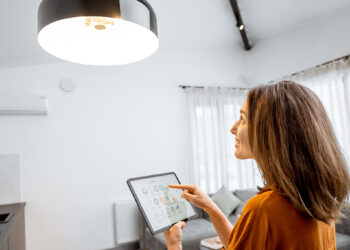The rapid evolution of smart home technology has moved beyond mere convenience; it’s fundamentally reshaping how we live, interact with our environments, and manage our daily routines. What once seemed like futuristic concepts from science fiction are now tangible realities, offering unprecedented levels of comfort, efficiency, and security. This in-depth exploration will delve into the diverse array of intelligent devices and systems that are redefining our living spaces, highlighting their core functionalities, benefits, and the exciting trajectory of their future development. Prepare to discover how these innovative smart tools are creating truly intelligent abodes.
Connectivity and the Internet of Things (IoT)
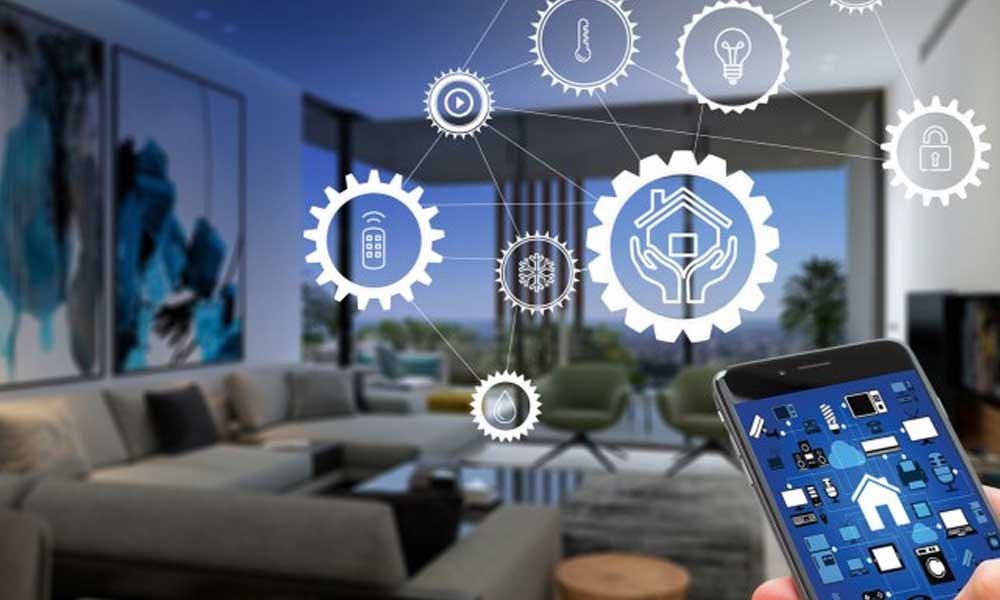
At the heart of every modern smart home lies a robust foundation of connectivity and the burgeoning Internet of Things (IoT). Without these essential pillars, the seamless interaction between devices, often across different manufacturers, would be impossible.
The Power of a Connected Network
A. Wi-Fi and Beyond: The ubiquitous Wi-Fi network serves as the primary conduit for most smart home devices, allowing them to communicate with each other and with the internet. However, other specialized protocols like Zigbee, Z-Wave, and Thread are gaining prominence. These low-power, mesh networking technologies are designed specifically for smart home applications, offering greater reliability, extended range, and lower energy consumption for devices like smart lights, sensors, and door locks. Understanding the differences between these protocols is crucial for building a cohesive and efficient smart home ecosystem.
B. Centralized Hubs and Bridges: While many smart devices can connect directly to your Wi-Fi, some benefit from a centralized smart home hub or bridge. These devices act as translators, allowing different protocols to communicate with each other. For example, a Philips Hue bridge enables Zigbee-powered lights to be controlled via Wi-Fi and integrated into broader smart home routines. These hubs often offer local processing capabilities, improving responsiveness and reducing reliance on cloud services.
C. The Role of the Router: Your home’s router isn’t just for internet access; it’s the nerve center for your smart devices. A high-quality, modern router with strong signal strength and support for numerous concurrent connections is essential for a stable and responsive smart home. Mesh Wi-Fi systems are increasingly popular for larger homes, ensuring consistent coverage throughout the property and eliminating dead zones.
Intelligent Lighting
Smart lighting is often the entry point for many into the smart home world, and for good reason. It offers immediate, tangible benefits that go far beyond simply turning lights on and off.
Crafting the Perfect Ambiance
A. Personalized Control: Smart bulbs and light strips allow for unprecedented customization. Users can adjust brightness, color temperature (from warm white to cool daylight), and even choose from millions of colors to create the perfect ambiance for any mood or occasion. Imagine transforming your living room into a cozy reading nook with warm, dim light or a vibrant party space with dynamic, colorful illumination.
B. Schedules and Routines: One of the most practical features of smart lighting is the ability to set schedules and automate routines. Lights can automatically turn on at sunset and off at sunrise, or gradually brighten in the morning to simulate a sunrise alarm. Integration with motion sensors can ensure lights only come on when a room is occupied, saving energy.
C. Energy Efficiency: Smart bulbs, primarily LED-based, are inherently more energy-efficient than traditional incandescent bulbs. The ability to precisely control brightness and schedule lighting further enhances energy savings. Some systems even offer energy monitoring features, allowing you to track your electricity consumption and identify areas for improvement.
D. Voice and App Control: The convenience of controlling your lighting with a simple voice command through smart assistants like Google Assistant or Amazon Alexa, or through a dedicated smartphone app, is a major draw. No more fumbling for light switches in the dark!
Climate Control
Smart climate control systems are revolutionizing how we heat and cool our homes, offering both enhanced comfort and significant energy savings.
The Intelligent Thermostat
A. Learning Capabilities: Modern smart thermostats, such as Nest or Ecobee, are equipped with machine learning algorithms that “learn” your preferences and daily routines. They observe when you’re home, when you’re away, and your preferred temperatures, automatically adjusting the climate to optimize comfort and efficiency without constant manual input.
B. Geofencing and Presence Detection: Many smart thermostats utilize geofencing, which uses your smartphone’s location to determine if you’re home or away. The system can then automatically adjust the temperature accordingly, ensuring your home is comfortable when you arrive and saving energy when it’s empty. Some also incorporate occupancy sensors in different rooms for more granular control.
C. Zoned Heating and Cooling: For homes with multiple zones, smart thermostats can manage each zone independently, allowing for personalized comfort in different areas of the house. For example, you can keep the bedrooms cooler at night while maintaining a warmer temperature in the living room.
D. Energy Reports and Insights: Most smart thermostats provide detailed energy usage reports, allowing you to track your consumption, understand what factors influence your energy bill, and identify opportunities for further savings. Some even offer personalized tips to help you reduce your carbon footprint.
Smart Security
Smart security systems have transformed traditional home protection into a comprehensive, interconnected network that offers unparalleled peace of mind and control.
Comprehensive Home Monitoring
A. Smart Cameras: High-definition smart cameras, both indoor and outdoor, are a cornerstone of modern security. They offer features like motion detection, night vision, two-way audio, and cloud storage for recorded footage. Many can differentiate between humans, animals, and vehicles, reducing false alarms. Some even integrate facial recognition to identify familiar faces.
B. Smart Doorbells: Video doorbells allow you to see and speak to visitors from anywhere, even if you’re not home. They typically include motion detection, night vision, and often package detection, alerting you when a delivery arrives. This adds an extra layer of security and convenience, allowing you to screen visitors or deter porch pirates.
C. Smart Locks: Smart locks offer keyless entry, allowing you to unlock your door with a smartphone, a fingerprint, or a custom code. You can grant temporary access to guests or service providers, revoke access remotely, and receive notifications whenever the door is locked or unlocked. Some integrate with geofencing to automatically unlock as you approach your home.
D. Sensors for Every Need: Beyond cameras and locks, smart security systems utilize a variety of sensors. Door and window sensors detect unauthorized entry, while glass break sensors alert you to smashed windows. Environmental sensors monitor for smoke, carbon monoxide, water leaks, and even changes in temperature or humidity, providing early warnings for potential hazards.
E. Professional Monitoring vs. DIY: Users can choose between self-monitoring their smart security system via a smartphone app or opting for professional monitoring services. Professional services provide 24/7 surveillance and dispatch emergency services in the event of an alarm, offering an added layer of protection.
Kitchen and Laundry
The heart of the home, the kitchen, and the often-dreaded laundry room are also becoming increasingly intelligent, with smart appliances designed to streamline daily chores and enhance culinary experiences.
The Smart Kitchen
A. Smart Refrigerators: These aren’t just for keeping food cold anymore. Smart refrigerators feature touchscreens, internal cameras to see what’s inside remotely, and inventory management systems that track expiration dates and suggest recipes based on available ingredients. Some can even create grocery lists and order items online.
B. Smart Ovens and Cooktops: Smart ovens can be preheated remotely, follow recipes with precise temperature control, and even connect to smart scales to ensure accurate measurements. Induction cooktops offer incredibly fast and precise heating, and some feature built-in cameras to monitor cooking progress.
C. Dishwashers and Coffee Makers: Even dishwashers are getting smarter, with features like remote start, cycle optimization based on load size, and notifications when dishes are clean. Smart coffee makers can brew your morning coffee on a schedule or with a voice command, ensuring your caffeine fix is ready when you are.
The Smart Laundry Room
A. Smart Washers and Dryers: Smart washing machines and dryers offer remote start/stop, cycle recommendations based on fabric type, and notifications when a load is complete. They can also connect to your utility company to run cycles during off-peak hours, saving on electricity costs. Some can even automatically dispense detergent based on load size.
B. Water and Energy Efficiency: These appliances are often designed with advanced sensors to optimize water and energy consumption, ensuring efficient cleaning while reducing your environmental footprint. They can detect load size, fabric type, and soil level to use just the right amount of resources.
Entertainment Systems

Smart entertainment systems are transforming the way we consume media, offering immersive experiences and seamless integration with our digital lives.
The Heart of Home Entertainment
A. Smart TVs: Modern smart TVs are essentially giant tablets with integrated streaming apps, voice assistants, and seamless connectivity to other smart home devices. They offer stunning picture quality (4K, 8K, OLED), advanced audio processing, and personalized content recommendations.
B. Sound Systems and Soundbars: Smart sound systems and soundbars provide immersive audio experiences, often with multi-room audio capabilities. You can stream music from various services, control playback with voice commands, and synchronize audio across different rooms for a unified listening experience.
C. Gaming Consoles and Streaming Devices: Next-generation gaming consoles offer incredible graphics and processing power, blurring the lines between gaming and cinematic experiences. Dedicated streaming devices like Apple TV or Roku provide access to a vast library of content and integrate with various smart home ecosystems.
D. Voice Control and Integration: The ability to control your entire entertainment setup with simple voice commands – “Play my favorite playlist,” “Turn on the TV,” “Dim the lights for movie night” – creates a truly seamless and intuitive user experience.
Robotics in the Home
Robotics are no longer confined to industrial settings; they are increasingly becoming part of our homes, taking on mundane tasks and even offering companionship.
Domestic Robots
A. Robotic Vacuum Cleaners: The most well-known domestic robots are robotic vacuum cleaners, such as the Roomba. These devices autonomously navigate your home, cleaning floors on a schedule or on demand. Advanced models feature mapping capabilities, obstacle avoidance, and even self-emptying dustbins.
B. Robotic Mops and Window Cleaners: Complementing vacuum cleaners are robotic mops that tackle spills and grime, and even window cleaning robots that adhere to glass surfaces to leave them sparkling clean. These tools free up valuable time and effort.
C. Lawn Mowers and Pool Cleaners: For outdoor spaces, robotic lawn mowers maintain your yard automatically, while robotic pool cleaners keep your swimming pool pristine. These devices can handle varying terrains and can be programmed to operate on specific schedules.
D. Personal Assistant Robots: While still nascent, the concept of personal assistant robots is gaining traction. These robots could assist with elderly care, provide reminders, retrieve small items, or simply offer companionship through interactive conversations. They are typically equipped with advanced AI, natural language processing, and mobility.
E. Kitchen Assistants: Imagine a robot that can chop vegetables, stir ingredients, or even assemble a meal. While not yet widespread, prototypes and research are exploring how robots can assist with more complex culinary tasks, further revolutionizing the kitchen.
Health and Wellness
Smart devices are increasingly playing a role in monitoring and improving our health and wellness, offering insights and tools for a more proactive approach to well-being.
Wearables and Beyond
A. Smartwatches and Fitness Trackers: These ubiquitous devices monitor a wide range of metrics, including heart rate, sleep patterns, step count, calories burned, and even blood oxygen levels. They provide personalized insights into your activity levels and offer motivation to achieve fitness goals. Advanced models can detect irregular heart rhythms and even perform ECGs.
B. Smart Scales: Smart scales go beyond just weight. They can measure body fat percentage, muscle mass, bone density, and even hydration levels, providing a more comprehensive picture of your body composition. This data is often synced to a smartphone app for long-term tracking and analysis.
C. Sleep Trackers: Dedicated sleep trackers, whether standalone devices or integrated into smartwatches, monitor sleep cycles, disturbances, and overall sleep quality. They can offer personalized recommendations to improve sleep hygiene and provide insights into potential sleep disorders.
D. Air Quality Monitors: With growing awareness of indoor air pollution, smart air quality monitors detect various pollutants like VOCs, particulate matter, and CO2. They can alert you to poor air quality and even integrate with smart air purifiers to automatically improve the environment.
E. Smart Water Bottles: These innovative bottles track your water intake and send reminders to stay hydrated, helping you meet your daily water goals. Some even integrate with fitness apps to provide a holistic view of your health.
Voice Assistants
Voice assistants have emerged as the central interface for many smart homes, enabling intuitive and hands-free control over a vast array of devices and services.
Conversational Control
A. Google Assistant, Amazon Alexa, and Apple Siri: These are the dominant players in the voice assistant market, each with its own ecosystem of compatible devices and services. They allow users to control smart lights, thermostats, security systems, and entertainment with simple voice commands.
B. Beyond Device Control: Voice assistants are capable of much more than just controlling smart home devices. They can play music, set alarms, answer questions, provide news updates, make calls, manage calendars, and even order groceries. Their capabilities are constantly expanding through ongoing AI and NLP (Natural Language Processing) advancements.
C. Personalization and Routines: Users can personalize their voice assistant experience by creating custom routines. For example, a “Good Morning” routine could turn on the lights, start the coffee maker, and play the news all with a single command.
D. Privacy Concerns: While incredibly convenient, voice assistants raise valid privacy concerns due to their always-listening microphones and the storage of voice commands. Reputable manufacturers employ encryption and offer options to review and delete voice recordings, but users should be aware of and manage their privacy settings.
Challenges and Considerations
While the benefits of smart home technology are immense, there are also important challenges and considerations that users should be aware of.
Ensuring a Seamless and Secure Experience
A. Cybersecurity Risks: The increased connectivity of smart home devices also creates potential cybersecurity vulnerabilities. Hacked devices can expose personal data, grant unauthorized access to your home, or even be used in botnet attacks. It’s crucial to use strong, unique passwords, enable two-factor authentication, keep device firmware updated, and use reputable brands.
B. Data Privacy: Smart devices collect vast amounts of data about your habits, routines, and even personal health. Understanding data privacy policies and actively managing your privacy settings is essential. Users should be aware of what data is being collected, how it’s used, and whether it’s shared with third parties.
C. Interoperability and Ecosystem Lock-in: Despite efforts like Matter, interoperability remains a challenge. Different manufacturers often operate within their own ecosystems, making it difficult for devices from different brands to communicate seamlessly. This can lead to ecosystem lock-in, where users are compelled to buy devices from a single brand.
D. Complexity and Setup: While user-friendliness is improving, setting up and configuring a comprehensive smart home system can still be complex for beginners. Patience, research, and a willingness to troubleshoot are often required. Professional installation services are available for those who prefer a hands-off approach.
E. Cost of Entry: While individual smart devices can be affordable, building a fully integrated smart home can represent a significant investment. Users should prioritize devices that offer the most value and utility for their specific needs.
Conclusion
The journey of smart home technology is a testament to human ingenuity and our endless pursuit of comfort, efficiency, and enhanced living. From the simple convenience of voice-controlled lighting to the complex automation of security systems and the transformative potential of domestic robots, these intelligent tools are continually reshaping our living spaces. As connectivity becomes more robust, AI more sophisticated, and devices more interoperable, the concept of a truly autonomous and responsive home is rapidly becoming a reality. By embracing these innovations responsibly, with an emphasis on security, privacy, and accessibility, we can unlock the full potential of our smart homes, creating environments that are not just smarter, but truly better for everyone. The future of living is intelligent, and it’s already at our doorstep.

